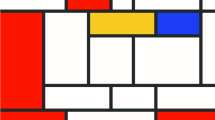Abstract
A decade ago it has been realized that Löwdin populations (atomic populations calculated in a Löwdin-orthogonalized basis) are not rotationally invariant if one uses Cartesian d- (f-) basis orbitals, as is the case for the standard 6-31G* or 6-31G** basis sets. It was shown that the reason for this behavior is that invariance is conserved only if the rotation induces a unitary transformation of the basis orbitals on each atom. Davidson pre-orthogonalizes the basis on every atom separately; then the rotational invariance is restored, but the numbers change wildly. Here the “best compromise” is proposed, in which one pre-orthogonalizes only those basis orbitals that transform between each other during the rotation. In this manner, the rotational invariance is restored and the numbers remain close to the range obtained by the conventional Löwdin-orthogonalization. It is also demonstrated that the situation with Wiberg indices (bond orders in the Löwdin-orthogonalized basis) is the same as for the populations: the condition of the invariance is the unitary character of the transformations induced by the rotations. In their case, the partial pre-orthogonalization proposed here is adequate, too.
Similar content being viewed by others
Notes
The use of any orthogonalization procedure is appropriate.
In the Gaussian suites of programs, this may be achieved by using the simple keyword “5D 7F”
Wiberg considered only real quantities, so he defined his bond index as the sum of the squares of the interatomic density matrix elements. We consider the general (possibly complex) case; that even facilitates the study of the transformation properties of the index.
Davidson–Löwdin-orthogonalization can be performed quite analogously; only all the intra-atomic overlap matrix elements should be conserved in the auxiliary overlap matrix.
The data for angles \(\theta\) exceeding 45° are not shown as they produce results that repeat those obtained for \(\theta\) belonging to the interval of \([0,\ 45^\circ ]\).
References
Löwdin P-O (1950) J Chem Phys 18:365–375
Carlson BJ, Keller JM (1957) Phys Rev 105:102–103
Mayer I (2004) Chem Phys Lett 393:209–212
Bruhn G, Davidson ER, Mayer I, Clark AE (2006) Int J Quantum Chem 106:2065–2072
Clark AE, Davidson ER (2001) J Chem Phys 115:7382–7392
Clark AE, Davidson ER (2003) Int J Quantum Chem 93:384–394
Wiberg KA (1968) Tetrahedron 24:1083–1096
Mayer I (1983) Chem Phys Lett 97:270–274
Mayer I (2003) Simple theorems, proofs, and derivations in quantum chemistry. Kluwer, New York
Baker J (1985) Theor Chim Acta 68:221–229
Mayer I (2014–2015) Program “Newlowdin”, Budapest, 2014–2015. It is available for downloading from the web-site http://occam.ttk.mta.hu/programs/
Author information
Authors and Affiliations
Corresponding author
Additional information
Dedicated to the memory of Professor Oleg V. Shishkin.
Rights and permissions
About this article
Cite this article
Mayer, I. Restoring rotational invariance of Löwdin populations. Struct Chem 27, 51–55 (2016). https://doi.org/10.1007/s11224-015-0712-7
Received:
Accepted:
Published:
Issue Date:
DOI: https://doi.org/10.1007/s11224-015-0712-7




